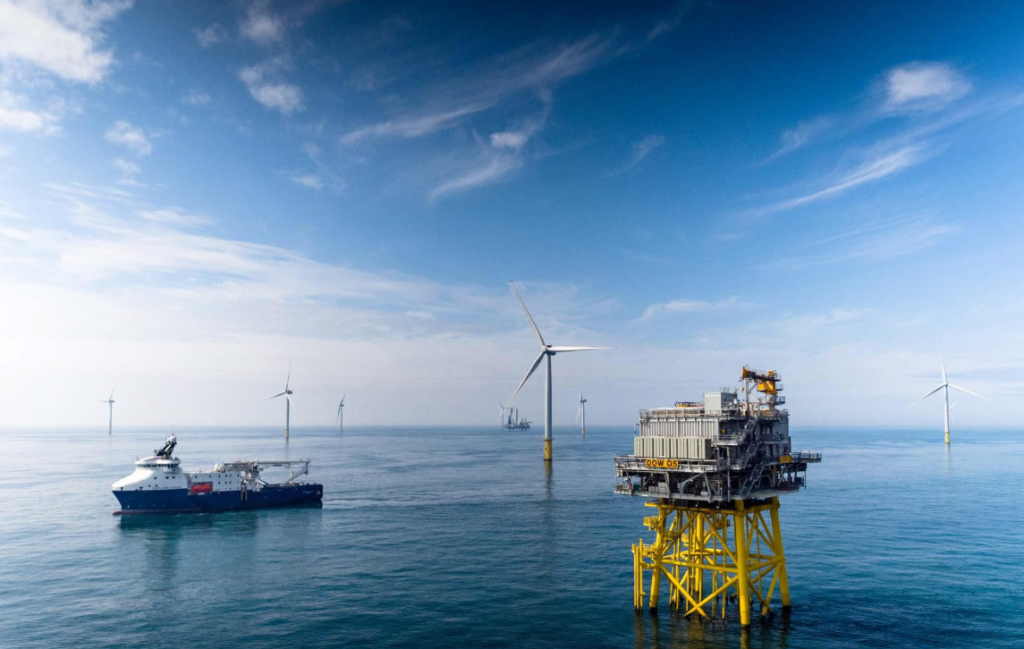
The developers of one of the North Sea’s most advanced gas-to-wire (GTW) projects believe the technology “hits the bullseye”.
Bosses at Tigre Group said GTW would integrate gas and offshore wind to help the UK make the “energy transition”.
Tigre, an acronym for Transition to Integrated Gas and Renewable Energy, intends to install a gas turbine on an existing southern North Sea (SNS) platform, located near an offshore wind farm substation.
The turbine will convert the produced natural gas to electricity, which will then be fed through the offshore wind farm’s electricity transmission system.
Tigre, which formerly operated under the Indigo Power brand name, is headquartered in Leicestershire.
Indigo was founded by Alison Hastings in 2014 to review and develop solar, tidal and Tigre energy projects.
Alison’s husband, Rob, and Dermot Grimson joined Indigo in 2016 to pursue the GTW concept.
All three used to work for energy giant Shell, while Mr Hastings and
Mr Grimson also had stints at the Crown Estate.
Mr Hastings, Tigre’s chief executive, said GTW had the potential to balance supply and demand for electricity.
He also claimed it could add years of operation to ageing gas fields while reducing their carbon footprints.
Furthermore, GTW will make better use of transmission infrastructure.
A recent report from the Oil and Gas Authority said that due to the intermittence of wind, annual use of the associated power infrastructure is typically 40%. This spare capacity presents an alternative route for electricity generated offshore from gas fields.
Mr Hastings said 30% of the value of the natural gas being extracted was eaten up by the cost of taking it to market.
By positioning gas-fired power stations at the point of production, companies can take the sting out of transport costs.
He said: “By doing that, we change gas field economics and can extend field life by five to 15 years.
“It will have quite a significant effect. Extending the life of a gas field means decommissioning costs can be put off for some time.
“It’s valuable to UK plc because it means you can extract more gas field reserves which would otherwise have been stranded, and achieve the MER (maximising economic recovery) objective.
“This is a bullseye for doing that. The carbon footprint is also relatively low, because if we can electrify gas production facilities offshore, we can remove old gas compression equipment.
“A lot of boxes are ticked by going down this route.”
Tigre has formed a special purpose company to deliver the first SNS project.
Tigre Project 1 (TP1), which is backed by Oxford Capital Partners managed investors and Baker Hughes, a GE company (BHGE), will see the development through to first power towards the end of 2021.
The power station should have a capacity of up to 300 megawatts, enough to power 200-300,000 homes.
Partners are currently at the engineering concept and design stage and expect to move on to the procurement phase next year.
A planning application should also be submitted in 2019, followed by a final investment decision in 2020.
Mr Hastings couldn’t reveal which SNS platform was being lined up for the firm’s first GTW project.
But he said Tigre would be looking for investment of £200-300 million to help pay for the capital assets, including the gas turbine, which will be supplied by BHGE.
Partners will also need to cover the cost of modifying the platform to accommodate the new gear, and transmission equipment will be required to connect the gas-fired power station to the nearby substation.
Mr Hastings said Tigre was working on other projects, but that none were as advanced as TP1.
He added that the firm’s primary focus was on the UK SNS, but that opportunities were likely to arise in the East Irish Sea and the Dutch sector of the North Sea.
Recommended for you

